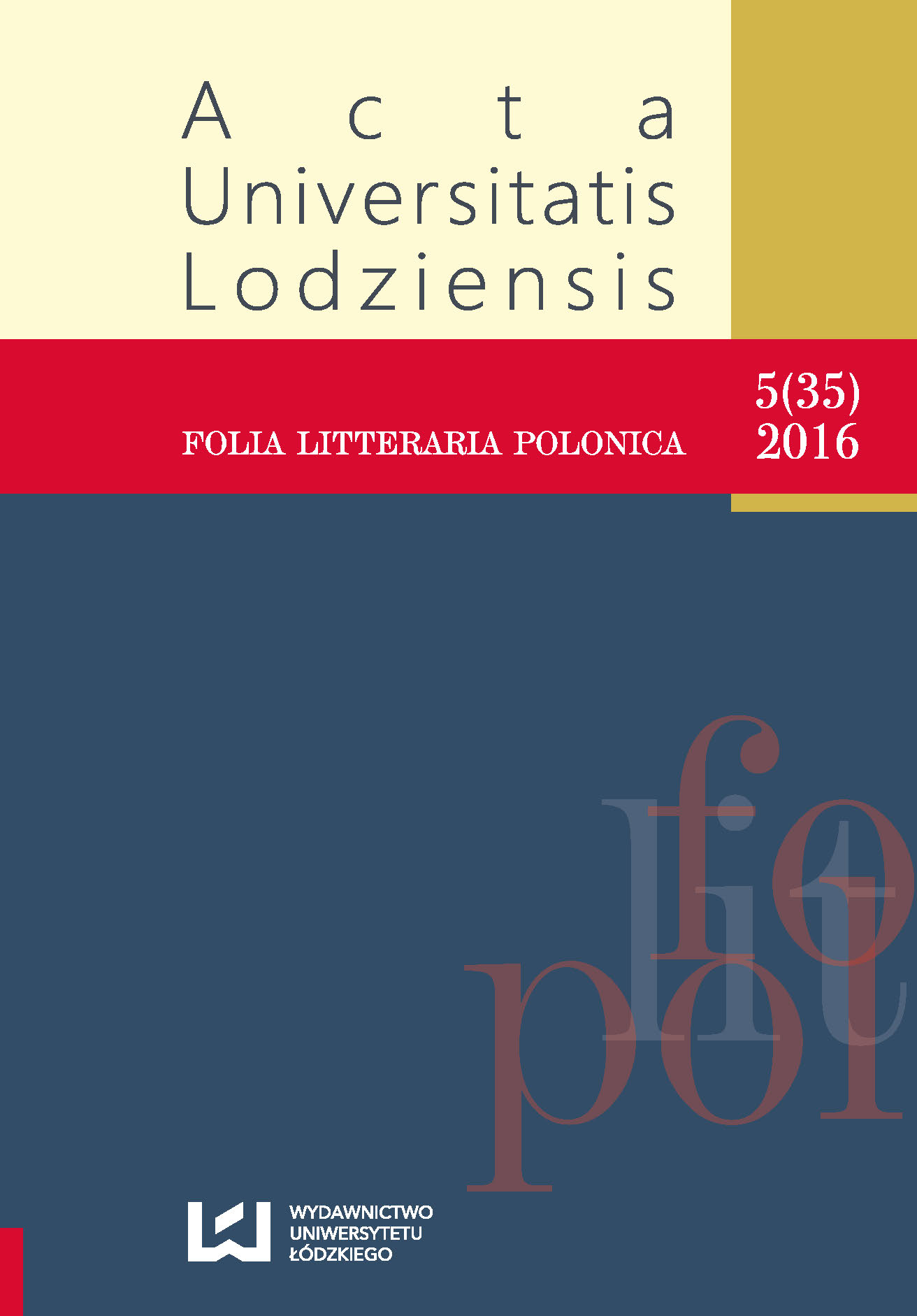Sculpture as a Code – Rhetorical Devices Used by the Sculptor
DOI:
https://doi.org/10.18778/1505-9057.35.18Słowa kluczowe:
visual communication, composition, formal image structure, formal narration, theory of vision and rhetoric, verbal communication, visualAbstrakt
The aim of the paper is to compare the formal organization of a visual message with the rhetorical devices used in a verbal message. This analysis is carried out based on the example of the sculpture Dual by Zbigniew Władyka. The creativity found in the rhetorical devices used in the sculpture Dual to trigger and amplify feelings proves that they can be employed even in this form of artistic expression. Creativity in the analysed sculpture is represented by German reunification, reflected in the form of the transformation of two characters into one. The sculpture is meant to inspire, to be an object (res) directing the viewer toward personal reflection, and invoking projections of fear and doubt, but also of confidence and courage. Confidence and courage are represented by a strong figure with a head, firmly standing on its feet. Fear and doubt are represented by a weak figure, carried by the first one. The centripetal composition used in the sculpture suggests merger rather than destruction. The sensory perception of the viewer is controlled by directional tensions, which lead the viewer’s sight along designated linear directions. As described earlier by Witkiewicz, directional tensions and motionless substance correspond to a rhetorical enlarging and diminishing. By interacting with the sculpture, you can experience these devices. Not only visualization is at work here, as in verbal communication, but also physical experience. The presented analysis shows that a sculptural work of art can be analysed in a similar way to verbal communication. Of course, not all verbal devices have their counterparts in visual communication, but the basic content and emotions can be expressed regardless of the code.
Pobrania
Bibliografia
Awdiejew A., „Struktura dyskursu, relewancja i interpretacja” [in print].
Google Scholar
Awdiejew A., Habrajska G., „Komponowanie sensu w procesie odbioru komunikatów”, Wydawnictwo Primum Verbum, Lodz 2010.
Google Scholar
Awdiejew A., Habrajska G., „Wprowadzenie do gramatyki komunikacyjnej”, Vol. 1, Oficyna Wydawnicza Leksem, Lask 2004.
Google Scholar
Awdiejew A., Habrajska G., „Wprowadzenie do gramatyki komunikacyjnej”, Vol. 2, Oficyna Wydawnicza Leksem, Lask 2006.
Google Scholar
Bonsiepe G., „Retoryka wizualno-werbalna”, transl. M.B. Fedewicz, Pamiętnik Literacki 1985, No. 3, pp. 303–309.
Google Scholar
Habrajska G., „Kompetencja komunikacyjna a interpretacja obrazu”, in: „Badanie i projektowanie komunikacji 2”, ed. A. Siemes, M. Grech, Wydawnictwo Uniwersytetu Wrocławskiego, Wroclaw 2013, pp. 59–78.
Google Scholar
Habrajska G., „Wybrane zagadnienia wprowadzające do nauki o komunikowaniu”, Wydawnictwo Primum Verbum, Lodz 2012.
Google Scholar
Jakobson R., „Poetyka w świetle językoznawstwa”, in: „W poszukiwaniu istoty języka. Wybór pism”, Vol. 2, wybór, ed. nauk. i wstęp M.R. Mayenowa, Państwowy Instytut Wydawniczy, Warsaw 1989, pp. 77–124.
Google Scholar
Korolko M., „Sztuka retoryki. Przewodnik encyklopedyczny”, Wiedza Powszechna, Warsaw 1982.
Google Scholar
Lewiński P., „Retoryka reklamy”, 2nd ed., en., rev. ed., Wydawnictwo Uniwersytetu Wrocławskiego, Wroclaw 2008.
Google Scholar
Panofsky E., „Studia z historii sztuki”, wybór, oprac. i posł. J. Białostocki, Państwowy Instytut Wydawniczy, Warsaw 1971.
Google Scholar
Paul-Cavalier F.J., „Wizualizacja. Od obrazu do działania”, transl. A. Suchańska, Dom Wydawniczy Rebis, Poznan 1994.
Google Scholar
Rusinek M., „Retoryka obrazu. Przyczynek do percepcyjnej teorii figur”, Wydawnictwo Słowo/Obraz/Terytoria, Gdansk 2012.
Google Scholar
Witkiewicz S.I., „Nowe formy w malarstwie i wynikające stąd nieporozumienia. Szkice estetyczne”, Państwowy Instytut Wydawniczy, Warsaw 2002.
Google Scholar
Pobrania
Opublikowane
Jak cytować
Numer
Dział
Licencja

Utwór dostępny jest na licencji Creative Commons Uznanie autorstwa – Użycie niekomercyjne – Bez utworów zależnych 4.0 Międzynarodowe.











